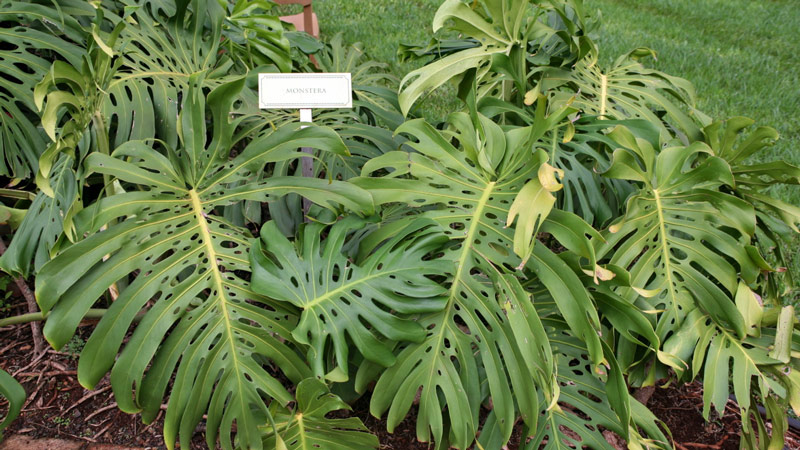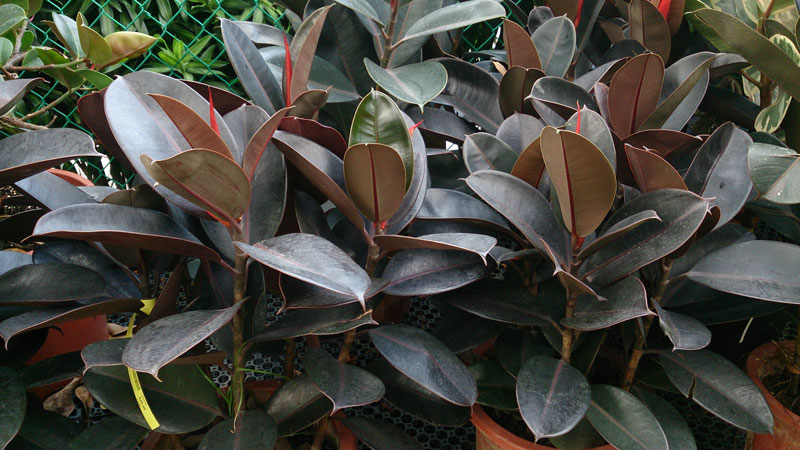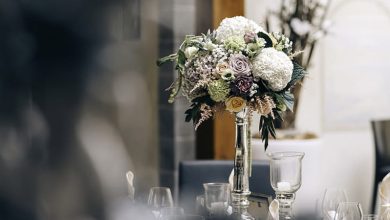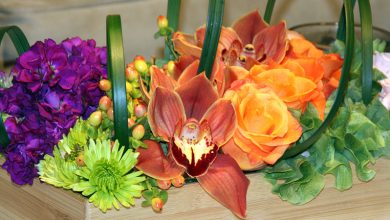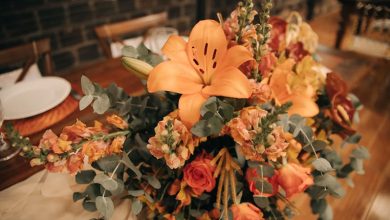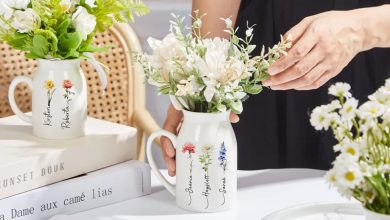The 10 Best Indoor Tropical Plants With Large Leaves
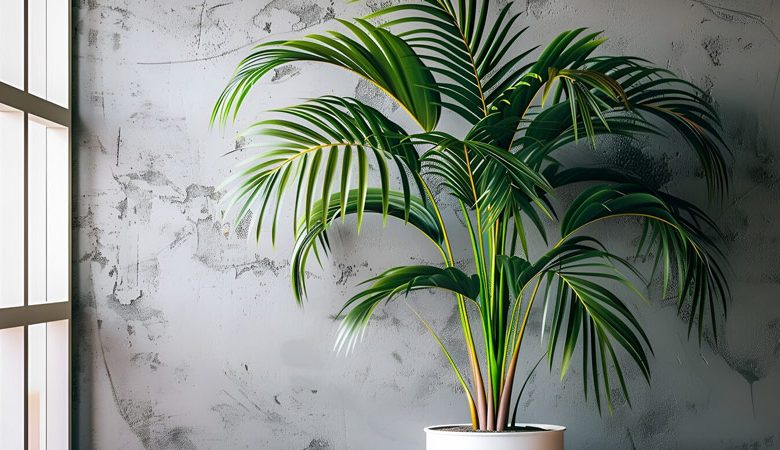
Indoor tropical plants with large leaves bring a lush, exotic vibe to any space, transforming ordinary rooms into verdant retreats. These stunning plants not only purify the air but also serve as living art pieces, with their broad, glossy leaves adding drama and elegance to your indoor environment.
From the majestic Monstera deliciosa, known for its striking, fenestrated leaves, to the regal Elephant Ear plant, whose enormous, heart-shaped foliage can make a bold statement in any room, these plants are the epitome of tropical splendor.
The Bird of Paradise, with its vibrant, banana-like leaves, evokes the feel of a tropical paradise, while the Rubber Plant’s dark, waxy leaves provide a sophisticated touch of greenery. Philodendrons, with their deep green, lobed leaves, offer a cascading effect when placed on shelves or in hanging baskets, creating a sense of natural flow throughout the space.
Read More: Types Of Indoor Plants And Their Benefits
Calatheas, on the other hand, boast intricately patterned leaves that are as mesmerizing as they are lush, adding an artistic flair to your indoor garden. These indoor tropical plants with large leaves are not only aesthetically pleasing but also thrive in the warm, humid conditions typical of many indoor environments, making them perfect for those looking to bring a piece of the tropics into their home.
Whether you’re aiming for a minimalist look with a single statement plant or creating an indoor jungle with a variety of species, the addition of indoor tropical plants with large leaves will infuse your living space with life, color, and a touch of the exotic.
The 10 Best Indoor Tropical Plants With Large Leaves
Here are the 10 best indoor tropical plants with large leaves that can transform your space into a lush, green paradise:
1. Monstera Deliciosa (Swiss Cheese Plant)
- Features: Known for its iconic, split leaves that can grow very large, the Monstera deliciosa is a favorite for its striking appearance.
- Care: Thrives in indirect light and requires moderate watering. It appreciates a bit of humidity, making it perfect for indoor environments.
2. Bird of Paradise (Strelitzia reginae)
- Features: With its large, banana-like leaves, this plant brings a tropical vibe to any room. When mature, it may even produce vibrant, bird-shaped flowers.
- Care: Needs bright, indirect light and regular watering. Ensure good drainage to prevent root rot.
3. Elephant Ear (Alocasia)
- Features: Named for its enormous, heart-shaped leaves, the Elephant Ear plant is a bold and dramatic choice for indoor spaces.
- Care: Prefers bright, indirect light and high humidity. Keep the soil consistently moist, but not soggy.
4. Rubber Plant (Ficus elastica)
- Features: This plant boasts large, glossy, dark green leaves that add a touch of elegance to any room.
- Care: Thrives in bright, indirect light but can tolerate lower light levels. Water when the top inch of soil feels dry.
5. Philodendron ‘Xanadu’
- Features: The Philodendron ‘Xanadu’ has deeply lobed, glossy leaves that spread out in a rosette shape, creating a lush, full appearance.
- Care: It prefers bright, indirect light and moderate watering. It’s fairly low-maintenance, making it a great option for beginners.
6. Fiddle Leaf Fig (Ficus lyrata)
- Features: With its large, violin-shaped leaves, the Fiddle Leaf Fig is a popular choice for adding height and drama to indoor spaces.
- Care: Needs bright, indirect light and consistent watering. It’s a bit finicky but worth the effort for its stunning foliage.
7. Calathea Orbifolia
- Features: This plant has large, round leaves with striking, silver-green patterns that create a captivating visual effect.
- Care: Requires medium to bright indirect light and high humidity. Keep the soil evenly moist.
8. Dumb Cane (Dieffenbachia)
- Features: Known for its broad, variegated leaves, the Dumb Cane adds a splash of color with its mix of green, white, and yellow.
- Care: Prefers bright, indirect light and moderate watering. It’s fairly easy to care for, making it a popular indoor plant.
9. Peace Lily (Spathiphyllum)
- Features: The Peace Lily has large, glossy leaves and is also known for its white, sail-like flowers that bloom periodically.
- Care: Thrives in low to medium light and prefers to be kept moist. It’s also an excellent air purifier.
10. Banana Plant (Musa)
- Features: Though it may not produce fruit indoors, the Banana Plant has large, paddle-shaped leaves that give any space a tropical feel.
- Care: Needs bright, indirect light and high humidity. Keep the soil consistently moist.
Read More: Top 10 Indoor Plants Cats Dislike
These indoor tropical plants with large leaves are perfect for adding a bold, green statement to your home, bringing both beauty and a touch of nature indoors.
Indoor tropical plants with large leaves offer numerous advantages that go beyond their striking visual appeal. Here are some key benefits:
1. Aesthetic Appeal
- Lush and Dramatic Decor: These plants serve as eye-catching focal points in any room, with their large, bold foliage adding a sense of drama and vibrancy to your decor. They can complement various interior design styles, from minimalist to bohemian.
2. Air Purification
- Improved Air Quality: Many indoor tropical plants with large leaves are excellent natural air purifiers. They absorb toxins like formaldehyde, benzene, and carbon monoxide, and release fresh oxygen, making your indoor environment healthier.
3. Humidity Regulation
- Enhanced Humidity: These plants naturally release moisture through a process called transpiration, which can help maintain optimal indoor humidity levels. This is particularly beneficial in dry climates or during winter months when indoor air tends to be dry.
4. Stress Reduction
- Calming Atmosphere: The presence of lush greenery has been shown to reduce stress, improve mood, and promote a sense of well-being. The large, calming leaves of tropical plants can create a serene and relaxing environment in your home.
5. Sound Absorption
- Noise Reduction: The broad leaves of these plants can help absorb sound, making them useful for reducing background noise in busy homes or offices. This contributes to a quieter, more peaceful living space.
Read More: Top 10 January Flower Arrangement Ideas
6. Increased Productivity
- Enhanced Focus and Creativity: Studies suggest that having plants in your environment can boost productivity, creativity, and concentration. The vibrant, large-leaved tropical plants provide a refreshing and stimulating visual break, helping to rejuvenate your mind.
7. Easy Care
- Low Maintenance: Many indoor tropical plants with large leaves, such as Monstera and Rubber Plants, are relatively easy to care for. They typically require moderate light and watering, making them suitable even for beginners.
8. Versatility in Placement
- Flexible Decor Options: These plants can thrive in various indoor conditions, from bright, indirect light to low-light environments. Their versatility allows you to place them in different rooms, including living rooms, bedrooms, and even bathrooms.
9. Natural Privacy Screens
- Privacy and Partitioning: With their dense, broad foliage, these plants can serve as natural privacy screens or room dividers, adding both beauty and function to open spaces.
10. Connection to Nature
- Biophilic Design: Incorporating large-leaved tropical plants into your home fosters a connection to nature, which can have positive psychological effects. This biophilic design approach is increasingly popular in modern interiors, promoting a sense of harmony and balance.
Overall, indoor tropical plants with large leaves are more than just decorative elements—they offer a range of practical benefits that enhance both the ambiance and health of your living space.
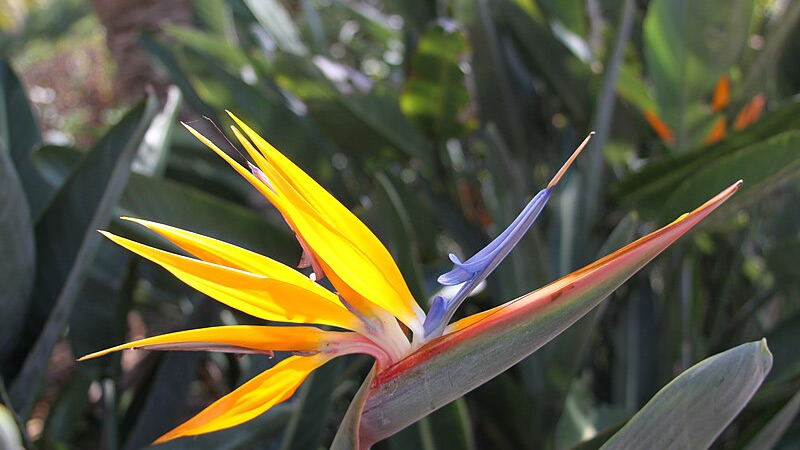
Disadvantages of Indoor Tropical Plants With Large Leaves
While indoor tropical plants with large leaves offer many benefits, they also come with a few disadvantages that are important to consider:
1. Space Requirements
- Large Footprint: These plants can take up considerable space due to their broad leaves and overall size. This might be challenging in small apartments or rooms with limited floor space, where they can easily overwhelm the area.
2. Maintenance Needs
- Higher Maintenance: Large-leaved plants often require regular cleaning to keep their leaves free of dust, which can accumulate and affect their ability to photosynthesize. Some may also need regular pruning to control their size and shape.
Read More: Snake Plant in Bathroom Without Window: Care Tips
3. Humidity and Temperature Sensitivity
- Humidity Demands: Many large-leaved tropical plants thrive in high humidity, which can be difficult to maintain in some indoor environments, especially in dry climates or during winter when indoor heating is used.
- Temperature Sensitivity: These plants are sensitive to cold drafts and sudden temperature changes, which can cause leaf damage or even kill the plant if not managed properly.
4. Watering Challenges
- Risk of Overwatering: Large tropical plants often need consistent moisture, but overwatering can lead to root rot. Balancing the right amount of water can be tricky, particularly for beginners.
- Heavy Watering: Larger plants typically require more water, which can be cumbersome, especially for those who are not home frequently or who have a busy lifestyle.
5. Pests and Diseases
- Attraction to Pests: The large, fleshy leaves of these plants can attract pests such as spider mites, aphids, and mealybugs. Their dense foliage can also make it harder to spot and treat infestations early.
- Disease Susceptibility: High humidity and frequent watering, necessary for some tropical plants, can create conditions conducive to fungal infections and other diseases.
6. Potential Toxicity
- Toxic to Pets and Children: Many popular large-leaved tropical plants, such as the Monstera and Philodendron, are toxic if ingested by pets or children. This can be a significant concern in households with animals or young children.
7. Limited Lighting Adaptability
- Light Requirements: While some large-leaved plants can tolerate low light, many thrive best in bright, indirect light. Finding the right spot in your home that provides sufficient light without direct sun exposure can be challenging.
8. Heavy and Bulky
- Difficulty in Moving: Due to their size and weight, especially as they grow, these plants can be difficult to move. This can be an issue when redecorating or needing to relocate them for better lighting conditions.
9. Cost
- Higher Initial Investment: Larger tropical plants can be more expensive to purchase compared to smaller houseplants. Additionally, the cost of pots, soil, and other care supplies may also be higher.
10. Potential Mess
- Leaf Drop and Debris: Some tropical plants, particularly those with large leaves, may shed leaves or drop debris, which can be messy and require frequent cleaning of the surrounding area.
While the beauty and benefits of indoor tropical plants with large leaves are undeniable, it’s important to weigh these potential drawbacks to ensure that they fit well with your lifestyle and living environment.
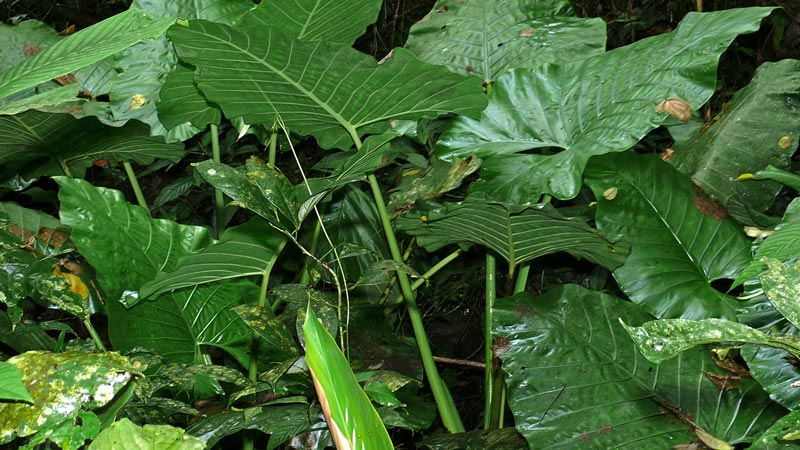
How often should you water Indoor Tropical Plants With Large Leaves?
The frequency of watering indoor tropical plants with large leaves depends on several factors, including the type of plant, the size of the plant and pot, the season, humidity levels, and the amount of light the plant receives. However, some general guidelines can help you determine how often to water these plants:
1. Check the Soil Moisture
- Frequency: Typically, indoor tropical plants with large leaves should be watered when the top 1-2 inches of soil feels dry to the touch.
- Method: Insert your finger into the soil or use a moisture meter to check the moisture level. If the soil is dry at this depth, it’s time to water.
2. Seasonal Adjustments
- Growing Season (Spring and Summer): During the warmer months, when the plant is actively growing, it will likely require more frequent watering. This might be every 5-7 days, depending on the conditions.
- Dormant Season (Fall and Winter): In cooler months, tropical plants generally need less water because their growth slows down. Watering may be reduced to every 10-14 days, or even less often, depending on the indoor environment.
3. Humidity Considerations
- High Humidity: If your home is naturally humid or if you use a humidifier, your plants may need less frequent watering because the soil will retain moisture longer.
- Low Humidity: In dry environments, you may need to water more often, but it’s also important to ensure the plant gets enough humidity through misting or using a pebble tray.
4. Light Exposure
- Bright, Indirect Light: Plants that receive more light tend to dry out faster and may need more frequent watering.
- Low Light: Plants in lower light conditions will use water more slowly and may require less frequent watering.
5. Pot Size and Material
- Larger Pots: These hold more soil, which retains moisture longer, so plants in larger pots may need watering less often.
- Pot Material: Terracotta pots are porous and allow moisture to evaporate faster, which may require more frequent watering compared to plastic or glazed pots.
6. Plant Size
- Mature Plants: Larger plants with extensive root systems may need more water to sustain their foliage, but you still need to avoid overwatering, which can lead to root rot.
General Rule
- Water Thoroughly: When you do water, ensure the water runs out of the drainage holes to thoroughly moisten the root ball. Empty any excess water from the saucer to prevent root rot.
- Consistency: Try to maintain a consistent watering schedule, but always adjust based on the plant’s specific needs and environmental conditions.
By regularly checking the soil moisture and observing your plant’s condition, you can fine-tune your watering routine to keep your indoor tropical plants with large leaves healthy and thriving.
Conclusion
In conclusion, indoor tropical plants with large leaves are a stunning addition to any home, offering both aesthetic appeal and practical benefits. These plants, with their expansive, vibrant foliage, bring a piece of the tropics indoors, creating a lush and inviting atmosphere.
Whether you choose the dramatic Monstera, the elegant Fiddle Leaf Fig, or the bold Elephant Ear, these plants not only enhance your living space with their beauty but also contribute to a healthier environment by purifying the air.
By incorporating indoor tropical plants with large leaves into your decor, you can transform any room into a tranquil, verdant sanctuary that feels both exotic and comforting.


